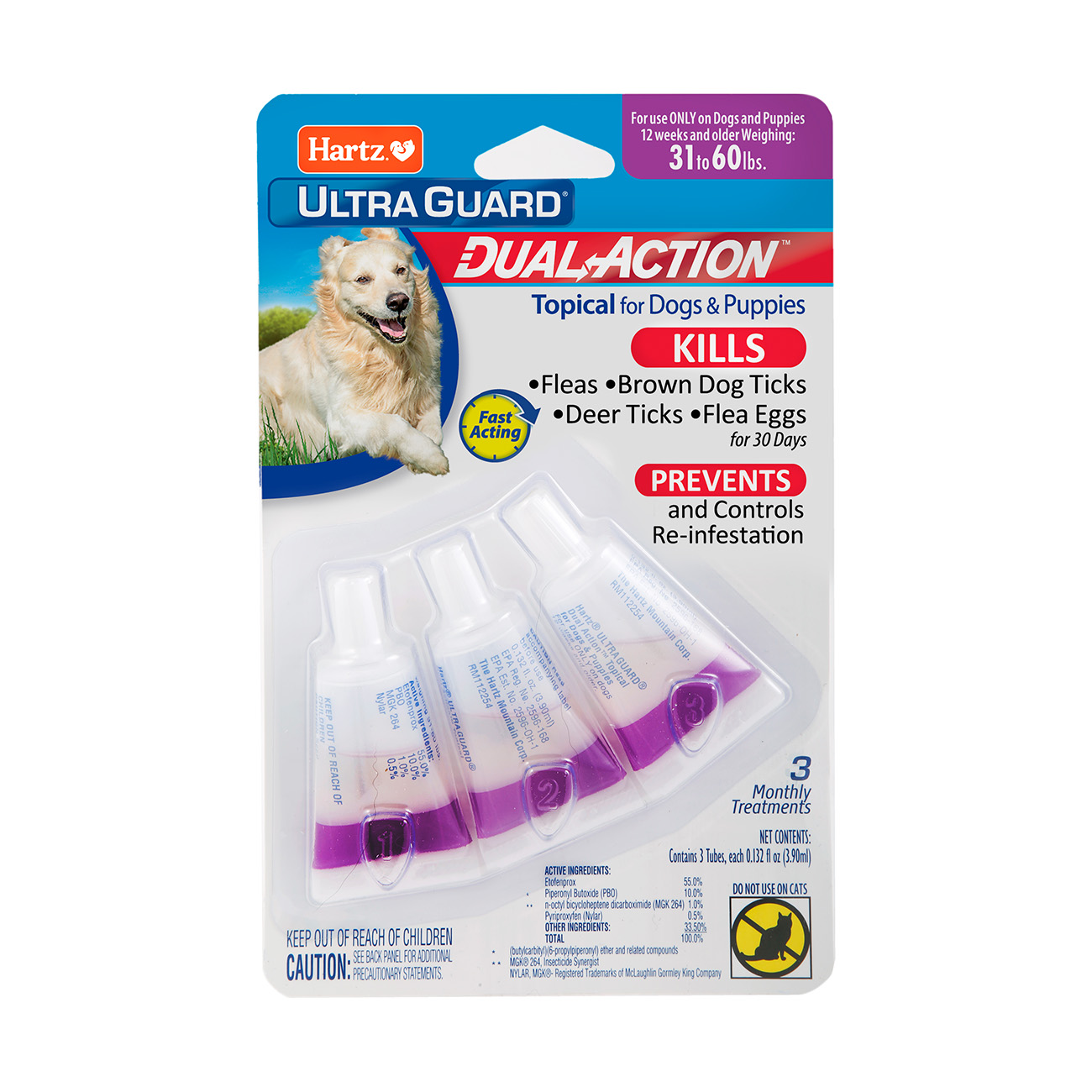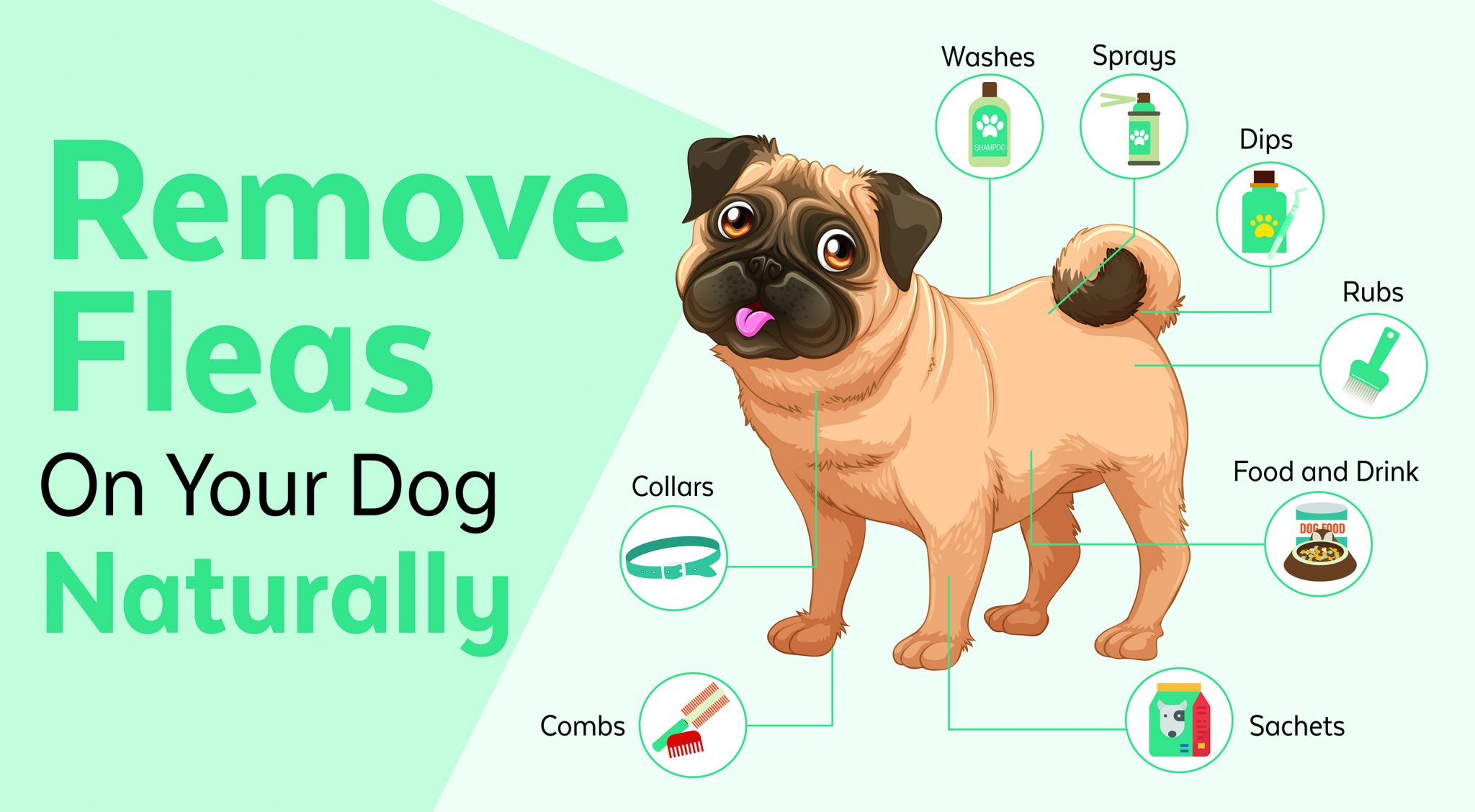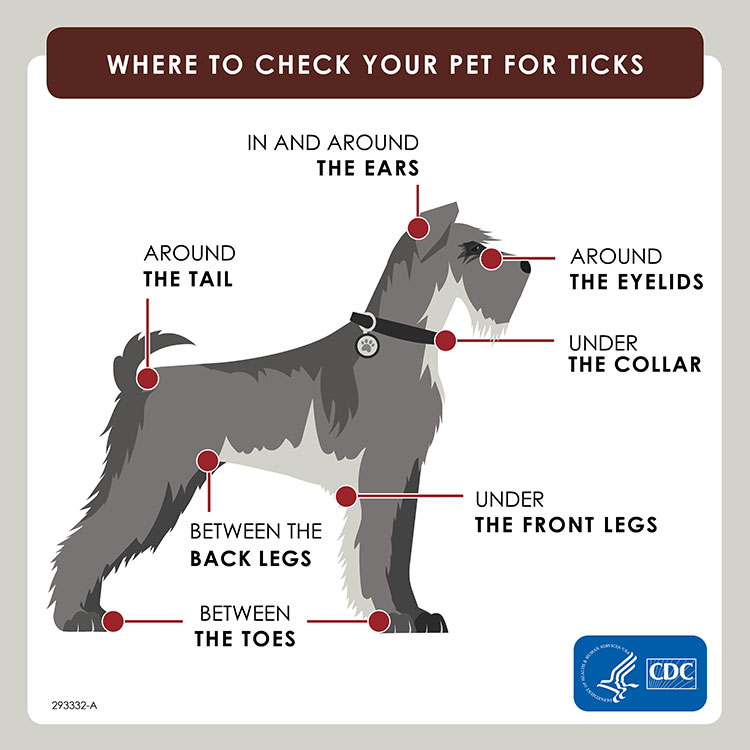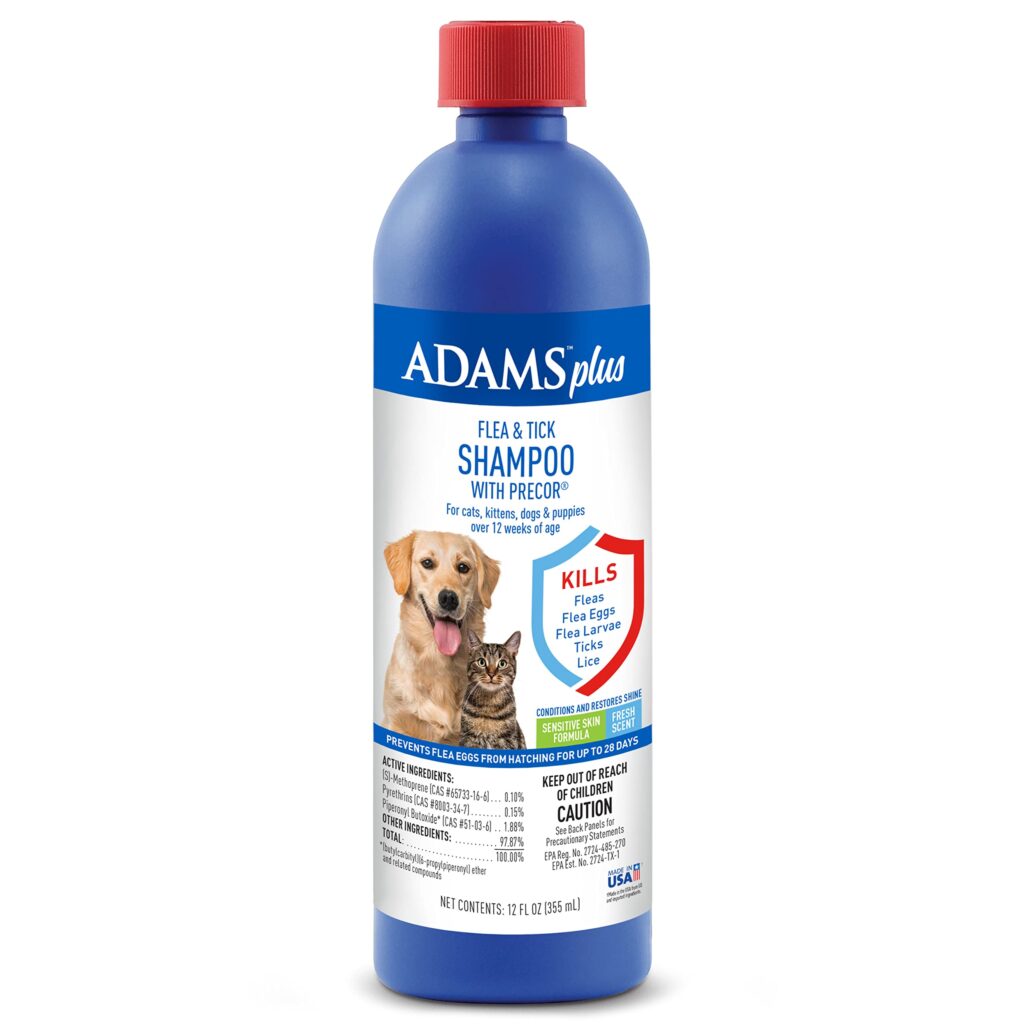To prevent fleas in dogs, effective methods include using monthly flea preventatives and keeping the dog’s environment clean and sanitized. Regular grooming and vacuuming can also help prevent flea infestations.
Protecting your dog from fleas is essential for their health and well-being. Fleas can cause discomfort and health issues for your pet, and they can also infest your home. By taking proactive measures to prevent flea infestations, you can keep your dog and your living space safe and healthy.
We will explore effective methods for preventing fleas in dogs, including the use of flea preventatives, environmental control, grooming, and other tips to keep your furry friend free from these troublesome pests. Let’s dive into the best practices for protecting your dog from fleas and maintaining a flea-free environment.

Credit: www.hartz.com
Regular Grooming
Regular grooming is one of the most effective methods for preventing fleas in dogs. By incorporating a regular grooming routine, dog owners can significantly reduce the risk of fleas infesting their pets and their home.
Bathing
Bathing your dog with a gentle yet effective flea shampoo can help eliminate any existing fleas and prevent future infestations. When bathing your dog, be sure to focus on the areas where fleas are commonly found, such as the neck, back, and tail. Use lukewarm water to avoid drying out your dog’s skin, and ensure thorough rinsing to remove all traces of shampoo.
Brushing
Regular brushing is essential for flea prevention, as it helps to remove any dirt, debris, and potential flea eggs from your dog’s coat. Use a flea comb to detect and remove any adult fleas or eggs hidden in the fur. Brushing your dog’s coat also promotes healthy circulation and skin condition, reducing the likelihood of flea infestations.
Clean Environment
A clean environment is crucial in preventing fleas in dogs. Regular vacuuming and washing bedding are effective methods for maintaining a flea-free living space for your canine companion.
Regular Vacuuming
Vacuuming your home regularly is an essential practice to control flea populations. Vacuuming not only removes adult fleas but also eliminates their eggs, larvae, and pupae, disrupting their life cycle. Use a vacuum cleaner with a powerful suction and focus on areas where your dog spends the most time, such as carpets, rugs, and furniture.
Washing Bedding
Regularly washing your dog’s bedding is crucial for flea prevention. Wash bedding in hot water and use a pet-safe detergent to ensure that any fleas, eggs, or larvae are effectively eradicated. Consider using a pet-friendly flea spray on bedding and furniture to provide an extra layer of protection against fleas.
Natural Remedies
Prevent fleas in dogs with effective natural remedies. Discover safe and easy methods to keep your furry friend flea-free.
Lemon Spray
Lemon spray is a natural remedy that can help prevent fleas in dogs. The strong citrus scent deters fleas, keeping them away from your furry friend. To make your own lemon spray, simply follow these steps: – Boil two cups of water and add two sliced lemons to create a lemon-infused solution. – Let the mixture steep overnight, allowing the lemon to release its oils. – Once cooled, strain the liquid into a spray bottle. – Spray the lemon solution onto your dog’s coat, focusing on areas where fleas are commonly found such as the neck, back, and tail. Note: Always check your dog’s skin for any signs of irritation before applying the lemon spray.
Apple Cider Vinegar
Another effective natural remedy for preventing fleas in dogs is apple cider vinegar. The strong smell and taste of apple cider vinegar repel fleas, making it a great addition to your flea prevention routine. Here’s how to use apple cider vinegar on your furry friend: – Dilute apple cider vinegar with equal parts water. – Use a spray bottle to apply the mixture to your dog’s fur, avoiding the eyes and sensitive areas. – Alternatively, you can add a teaspoon of apple cider vinegar to your dog’s water bowl to repel fleas from the inside out. Note: Make sure to use raw, unfiltered apple cider vinegar as it contains the beneficial properties that repel fleas. Using these natural remedies as part of your flea prevention strategy can help keep your dog free from these pesky pests. Additionally, always remember to regularly groom your dog, keep their bedding clean, and vacuum your home to reduce the chances of flea infestations. With these simple yet effective methods, you can ensure a flea-free environment for your beloved canine companion.

Credit: jetpetresort.com
Flea Prevention Medications
Fleas are a common nuisance for dogs, causing itchiness, discomfort, and potential health issues. Preventing fleas is crucial to keeping your furry friend happy and healthy. One of the most effective methods for preventing fleas in dogs is through the use of flea prevention medications. In this article, we will explore two popular types of flea prevention medications for dogs: oral medications and topical treatments.
Oral Medications
Oral medications are easy to administer and provide long-lasting protection against fleas. These medications are usually given to your dog once a month and come in the form of tasty flavored tablets or chews. When your dog ingests the medication, it circulates through their bloodstream, reaching every inch of their body. This means that any fleas that bite your pet will be exposed to the medication, ultimately preventing infestation.
One of the advantages of oral medications is their convenience. Unlike topical treatments, there is no need to worry about applying anything to your dog’s skin. Additionally, oral medications tend to be fast-acting, with some providing protection within hours. This makes them an ideal choice if your furry friend frequently interacts with other animals or spends time in areas where fleas are common.
It’s important to note that different oral medications may have varying coverage against other parasites, such as ticks and heartworms. Be sure to consult with your veterinarian to determine the best option for your dog’s specific needs. Some popular brands of oral flea prevention medications include NexGard, Bravecto, and Simparica.
Topical Treatments
Topical treatments, also known as spot-on treatments, are another effective method for preventing fleas in dogs. These treatments are applied directly to your dog’s skin, typically between their shoulder blades or at the base of their neck. The medication is then spread throughout your dog’s body through the natural oils on their skin, providing protection against fleas.
Topical treatments are typically applied once a month and are waterproof, meaning they won’t lose their effectiveness if your dog gets caught in the rain or goes for a swim. They are also known for their efficacy in killing fleas already present on your dog, making them a popular choice for pet owners dealing with an ongoing infestation.
It’s important to carefully follow the instructions provided by the manufacturer when applying topical treatments. Applying too much or too little can affect their effectiveness. Some popular brands of topical flea prevention treatments include Frontline Plus, Advantage II, and Revolution.
Regular Vet Check-ups
Regular vet check-ups are a crucial aspect of maintaining the overall health and well-being of your furry friend. When it comes to flea prevention, professional advice plays a vital role. By seeking guidance from a trusted veterinarian, you can stay updated on the latest flea prevention methods and ensure the optimal health of your dog.
Flea Prevention Products
- Choose appropriate flea prevention products recommended by your vet.
- Topical treatments, such as spot-on liquids, are highly effective in preventing fleas.
- Flea collars can be an additional line of defense against fleas.
- Oral medications, such as chewable tablets, are popular alternatives for flea prevention.
Professional Advice
When it comes to ensuring the best flea prevention methods for your dog, seeking professional advice is essential. Your vet has in-depth knowledge and expertise in handling flea-related issues. They can recommend the most suitable and safe flea prevention products for your specific dog breed, age, and health condition.
In addition to recommending effective flea prevention products, your vet can also guide you on the correct application or administration methods. They can provide valuable insights on how to monitor your dog for potential flea infestations and offer guidance on appropriate actions to take if you spot any signs of fleas.

Credit: www.cdc.gov
Frequently Asked Questions Of Effective Methods For Preventing Fleas In Dogs
What Can I Give My Dog To Prevent Fleas?
You can give your dog flea prevention treatments such as oral pills, topical solutions, and flea collars. Regular grooming and keeping their living areas clean can also help prevent fleas.
What Is The Most Effective Flea Preventative?
The most effective flea preventative is a topical medication or oral pill prescribed by a veterinarian. These products kill existing fleas and prevent new infestations. Regular use is crucial for effective flea control.
Can Dogs Still Get Fleas On Preventative?
Yes, dogs can still get fleas even while on preventative measures. These preventatives may reduce the likelihood of flea infestation, but they do not offer complete protection. Regular flea prevention, like topical treatments or oral medications, is important to keep dogs safe from fleas.
What Is The Best Way To Prevent Flea Infestation?
Regularly treating your pets with flea prevention products, such as topical treatments or oral medications, is the best way to prevent flea infestations. Additionally, keeping your home clean by vacuuming regularly and washing your pets’ bedding can help reduce the risk of fleas.
Conclusion
Preventing fleas in dogs requires a proactive approach that includes regular grooming, maintaining a clean living environment, and using effective preventive products. By implementing these methods, you can safeguard your furry friend from the discomfort and health risks associated with fleas.
Remember to consult with your veterinarian for guidance on the most suitable prevention options for your dog. Start taking preventive measures today and give your dog the protection they need to lead a happy and healthy life.

